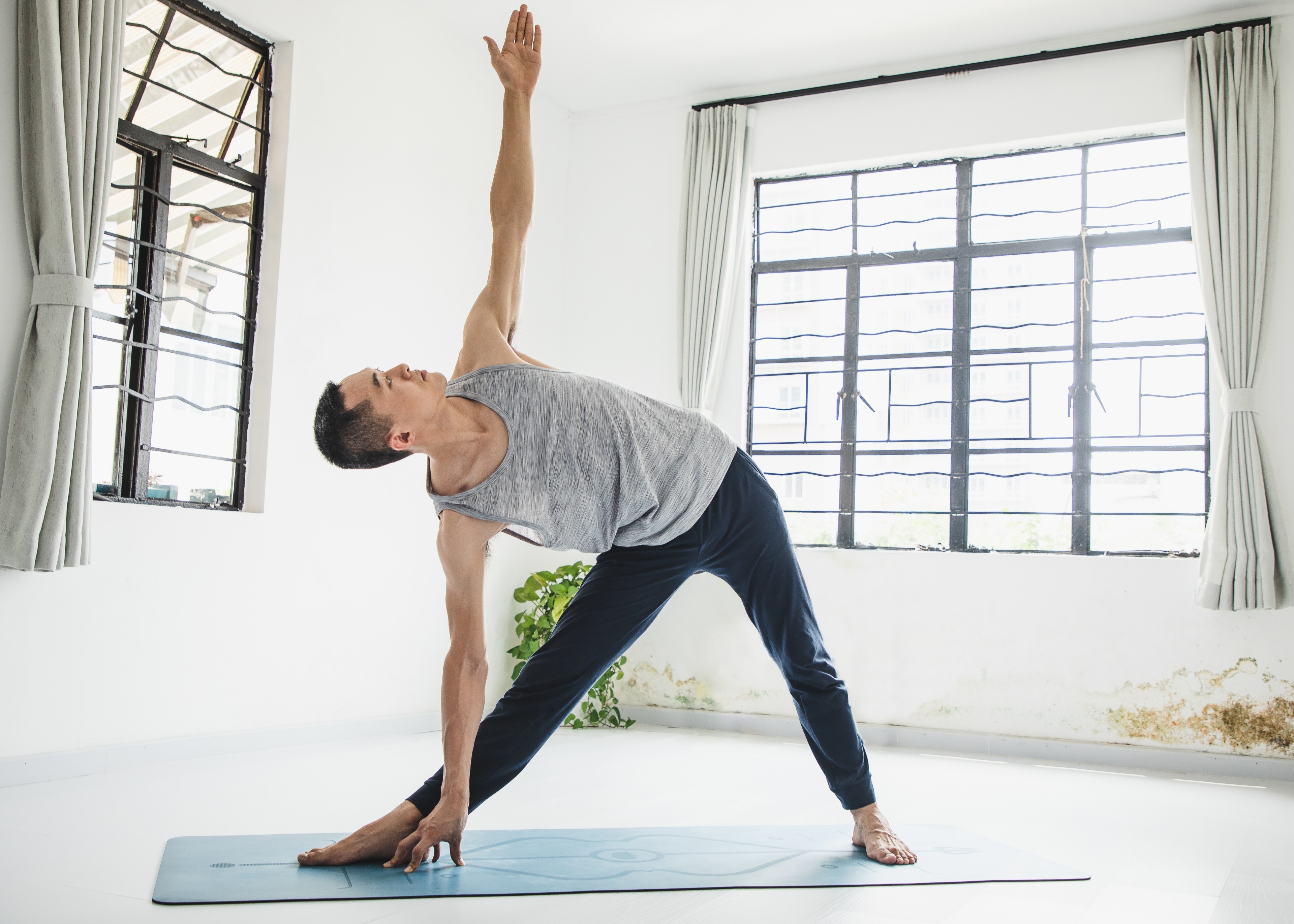
Kilito Chan/Getty Images
Tight Hips? Try These 9 Hip-Opening Stretches for Relief
Release tension from your hips with these easy-to-modify poses.
By Ingrid Yang•
Why Do You Get Tight Hips?
What Do Hip-Opening Stretches Do?
9 Hip-Opening Stretches to Try
How to Prevent Tight Hips
How to Add Hip-Opening Stretches to Your Routine
The Takeaway
Whether you spend your days sitting in front of a computer or training for professional races, you’re susceptible to tight hips (and the many downsides that come with them). Fortunately, hip-opening stretches can make your movements more fluid and pain-free—hence their prevalence in many types of yoga and stretching routines.
Even if you can’t feel any tightness in this area of your body, it’s crucial that you proactively prioritize your hip health. After all, you rarely use body parts in isolation, and your hips help your upper and lower body work harmoniously. As Peloton instructor Denis Morton puts it, “Your hips are what connect your roots to your branches.”
Here, we get into the importance of hip mobility and provide step-by-step instructions on how to do nine accessible hip-opening stretches.
Why Do You Get Tight Hips?
Many people assume tight hips result from doing too much physical activity, and although that can be true, it isn’t always the case. Below, learn more about some of the reasons people experience hip tightness.
Overuse During Exercise: Exercising without proper recovery time can lead to hip tightness. According to Denis, "Athletes have a tendency to overuse their hips." It’s especially common for cyclists and runners to overwork their hips, as they repeat linear movements, or movements in one straight line, rather than rotational movements. Because the athletes work their hips as they pedal or run, their muscles are typically strong, but Denis points out that there’s “no mechanical benefit to opening the hip on a bike or as you're running,” so they tighten over time.
Underuse: On the opposite end of the spectrum, Denis says that not moving enough throughout the day can tighten your hip muscles. "With a sedentary lifestyle, your hip muscles might be short from a lack of stretching and weak from lack of use,” he explains. Essentially, sitting keeps these muscles in a shortened position for an extended period of time, which can in turn reduce their range of motion and cause them to tighten.
Compensation for Muscle Imbalances: Your hips might tighten to overcompensate for the muscles and joints surrounding them, particularly if some are stronger than others. So if you have strong quads but weak glues, your hips might experience compensatory tightness to make up for the imbalance.
Poor Posture: Your hips provide stability and balance for your upper body, so standing or sitting with poor posture can lead to misalignment and place additional strain on your hip muscles.
The Structure of Your Hips
You might think of your hips as just ball-and-socket structures, but they actually feature various components that work together to help you move, bend, and stabilize your body.
Hip Joint: At the heart of this region is the hip joint, which is where your femur, or thigh bone, meets your pelvis. This ball-and-socket joint allows for the range of motion you need to do everything from walk to sit down.
Hip Muscles and Tendons: Numerous muscles and tendons surround your hip joint, and each one plays a vital role. For example, the hip flexors at the front of your hip are key in lifting your thigh and bending at your waist—two movements you use while cycling and running.
Hip Adductors and Hip Abductors: On either side of your hip are your adductors and abductors. Your adductors, which are in your inner thigh, draw your legs together, whereas your abductors are on the outside of your thighs and work to move your legs away from your body’s center.
Tightness or imbalances in these areas can have wide-reaching effects such as lower back pain, posture problems, and worsened exercise performance. Recognizing these issues and addressing them is essential for maintaining good hip health and overall physical well-being—that’s where hip-opening stretches come into play.
What Do Hip-Opening Stretches Do?
When you lower into a lunge or practice Pigeon Pose (Kapotasana), you’re doing multiple things at once—yes, opening your hips is one of them. Here are some of the other benefits of doing these poses.
Stretching Your Hip Muscles: When your hip muscles, such as your psoas and iliacus, are tight, they can cause issues like lower back pain and poor posture. Stretching them by doing hip-opening poses helps you maintain proper hip alignment and function.
Lengthening Your Gluteal Muscles: Practicing poses that lengthen the gluteal muscles (gluteus maximus, gluteus medius, and gluteus minimus) in the back of your hips helps balance your pelvis and alleviate tension in your lower back.
Releasing Tension in Your Hip Adductors: Many hip-opening stretches target your adductors, which are located in your inner thighs. Keeping your adductors flexible is important for overall hip mobility and lower body alignment.
Reducing Injury Risk: Practicing hip-opening poses can reduce the risk for injuries, particularly if you’re doing an activity that involves repetitive, high-impact movements. Plus, strong hips place less compensatory strain on your knees, which can prevent pain and injuries.
Improving Your Posture and Balance: Tight hips can cause misalignment in your pelvis, compromising your posture. By stretching and strengthening your hips, you contribute to healthier alignment of your pelvis, in turn supporting good posture and balance.
Increasing Your Range of Motion: Regularly practicing hip openers can enhance the range of motion in your hip joint, which is essential for activities that require bending and squatting motions.
Strengthening Surrounding Muscles: Many hip openers focus on stretching, however some also strengthen the muscles surrounding the hips (like your core, for example).
Stimulates Synovial Fluid Movement: Practicing hip openers helps circulate synovial fluid, which lubricates your hip joints and promotes healthy cartilage.
Boosting Confidence Levels: According to Denis, hip openers can give you more confidence and self-assuredness in your everyday life. “Most of us aren't going to lift cars off of people and don't need to squat 500 pounds, but we do want to get down the stairs safely, be able to play with our kids, and confidently step off the curb,” he says. “Knowing that you have done work to strengthen and stretch your hips will make you more confident in your day-to-day life.”
9 Hip-Opening Stretches to Try
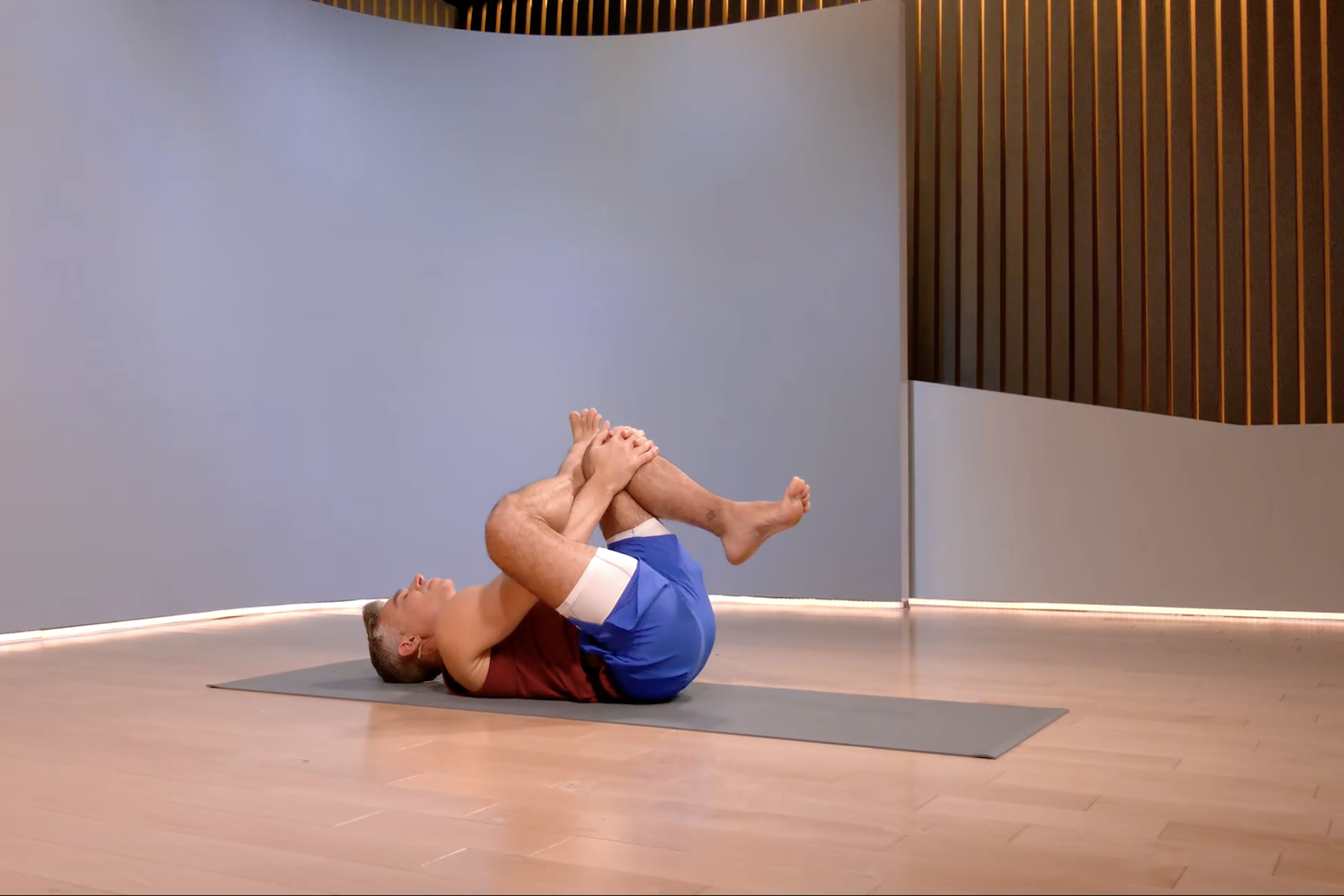
1. Figure Four (Eka Pada Rajakapotasana)
Perfect for beginners, the Figure Four Stretch is a gentle introduction to hip opening. “It’s reclined and really accessible,” Denis says. “It will get you the benefit of a hip-opening exercise without too much physical challenge.”
Lie on your back with the soles of your feet on the ground.
Cross your right ankle over your left knee.
If it’s in your practice, clasp your hands behind your left thigh to gently bring it toward your chest, deepening the stretch in your right hip.
Hold this position before switching sides.
2. Lizard Pose (Utthan Pristhasana)
After you get comfortable with Figure Four, Denis suggests moving to Lizard Pose for a deeper stretch. Once you’re in the posture, he recommends “angling your foot out at a 45-degree angle and rolling onto the outer edge."
Start in a low lunge with your right foot forward and both hands (or elbows) on the ground inside of your right foot. You can also place your hands on yoga blocks.
Angle your right foot slightly outward and roll onto its outer edge.
Maintain this pose, leaning into a deeper stretch in your hips. Repeat on the other side.

3. Happy Baby Pose (Ananda Balasana)
Happy Baby Pose relaxes your inner groin and lower back.
Lie on your back.
Keeping your back flat on the mat, grab the outer edges of your feet.
Gently pull your knees toward your armpits. If it feels comfortable, rock from side to side.
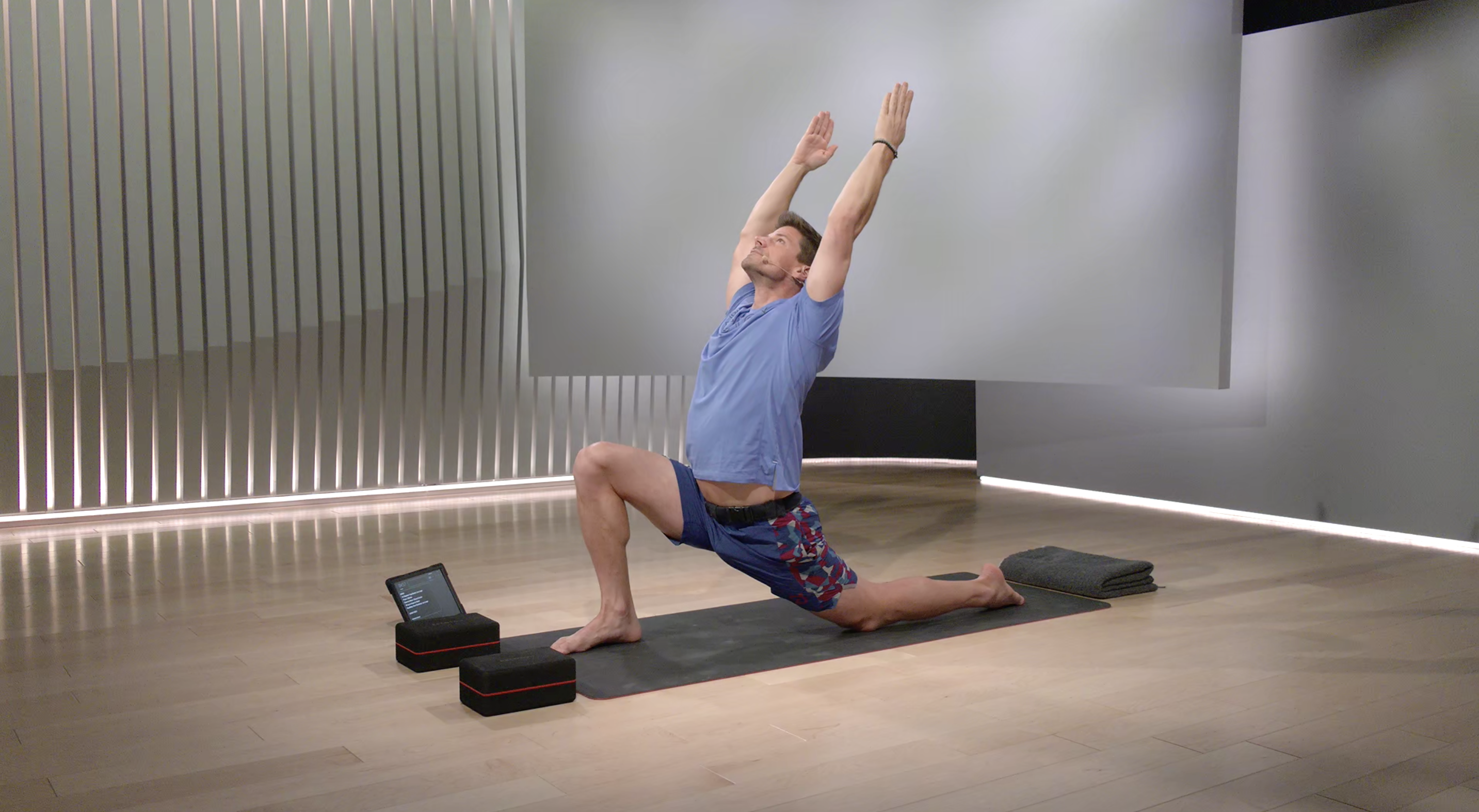
4. Low Lunge
Low lunges focus on your hip flexors. For a more comprehensive stretch, deepen the bend in your front knee.
Start in a standing position.
Step your right foot forward into a lunge and lower your left knee to the ground.
Keep your front knee over your ankle. Place your hands on the ground or lift them above your head.
Hold this position as you feel the stretch in your left hip flexor. Switch sides.
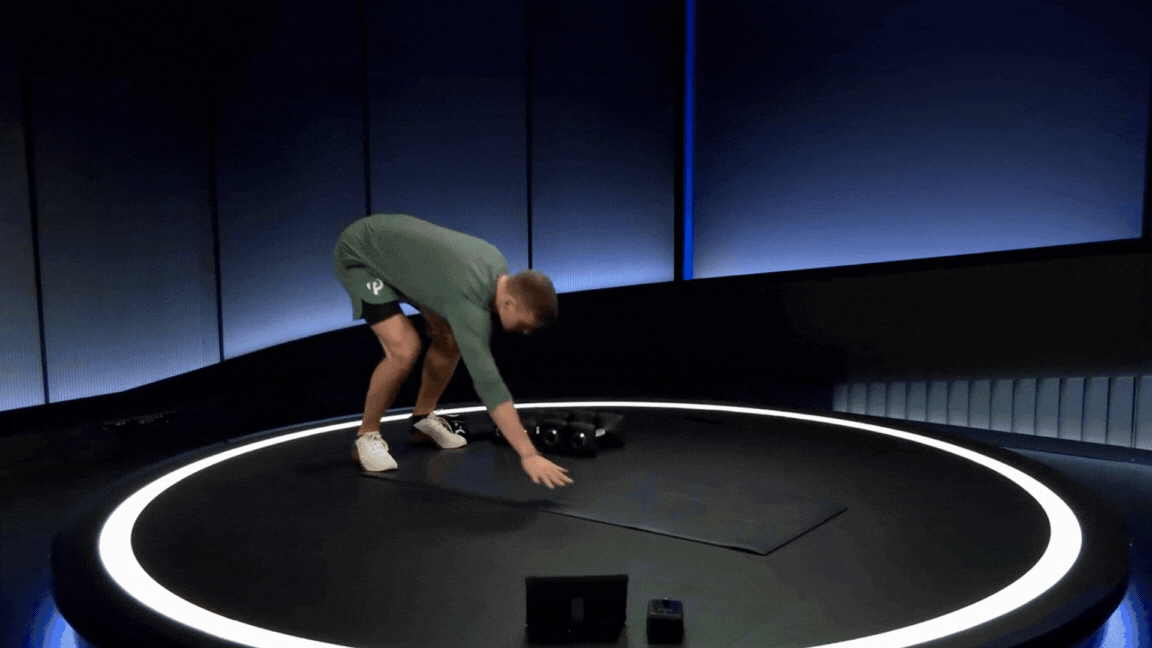
5. World's Greatest Stretch
This dynamic stretch combines a lunge and twist and tests your flexibility and mobility. It's excellent for those looking to deepen their hip-opening practice.
Begin in a low lunge with your right foot in front of you and your left knee on the ground
Place your left hand on the floor beside your right foot for balance.
Twist your torso to the right, extending your right arm upward. Look toward your raised hand.
Hold the pose for a few deep breaths. Switch sides.
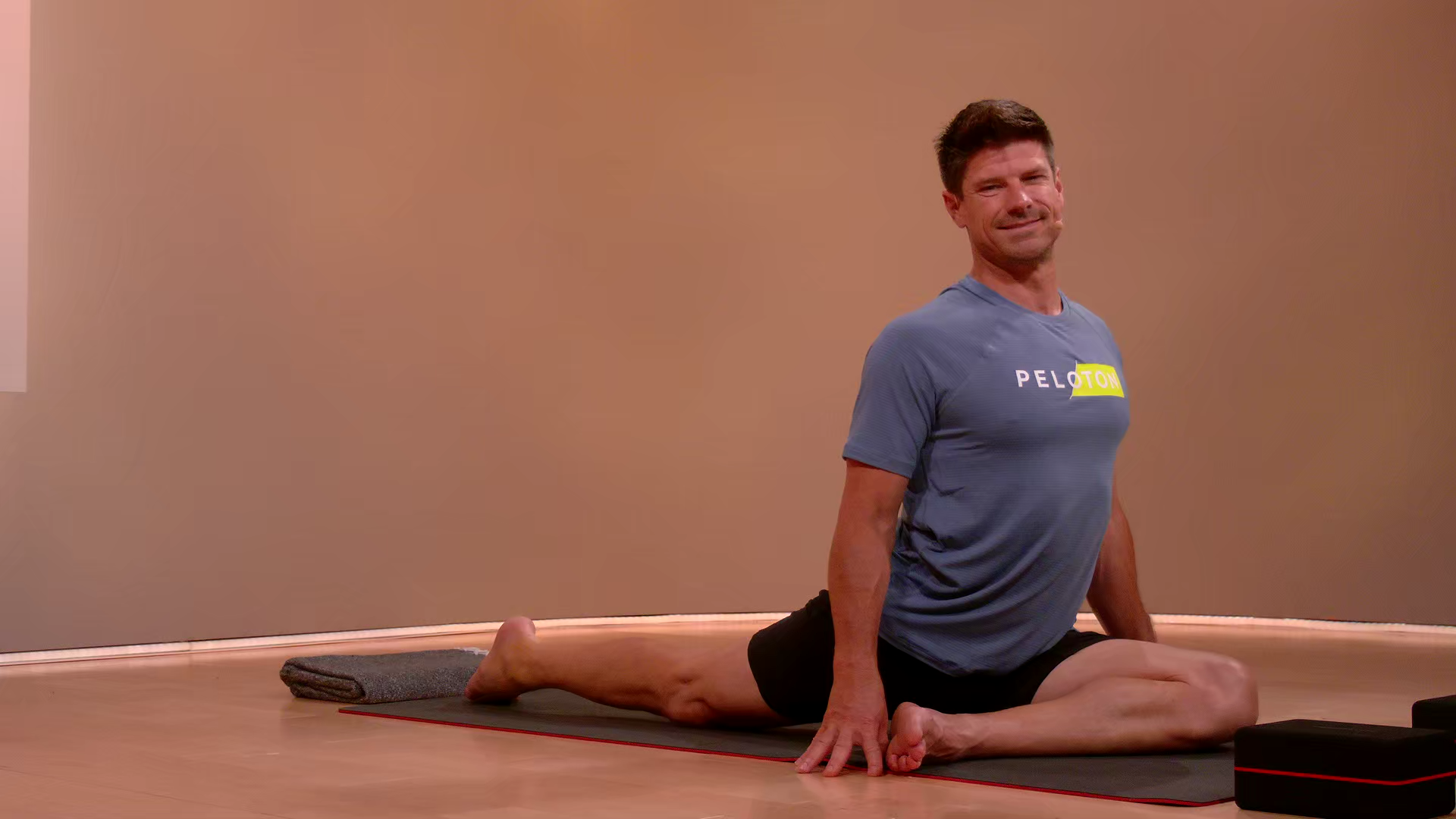
6. Pigeon Pose (Kapotasana)
Denis describes Pigeon Pose as one of the "most valuable of the hip openers, and the one with the greatest payoff.” He adds that you can place your hands on yoga blocks or use a blanket beneath you to cushion your hips.
Start in Downward Facing Dog Pose (Adho Mukha Svanasana).
Shift your weight forward as you bring your right knee toward your right wrist. Bring your right foot toward the left side of the mat and flex your toes.
Extend your left leg behind you while keeping your hips forward and square.
Fold forward over your bent right leg, and hold this position. Then, switch to the other side.
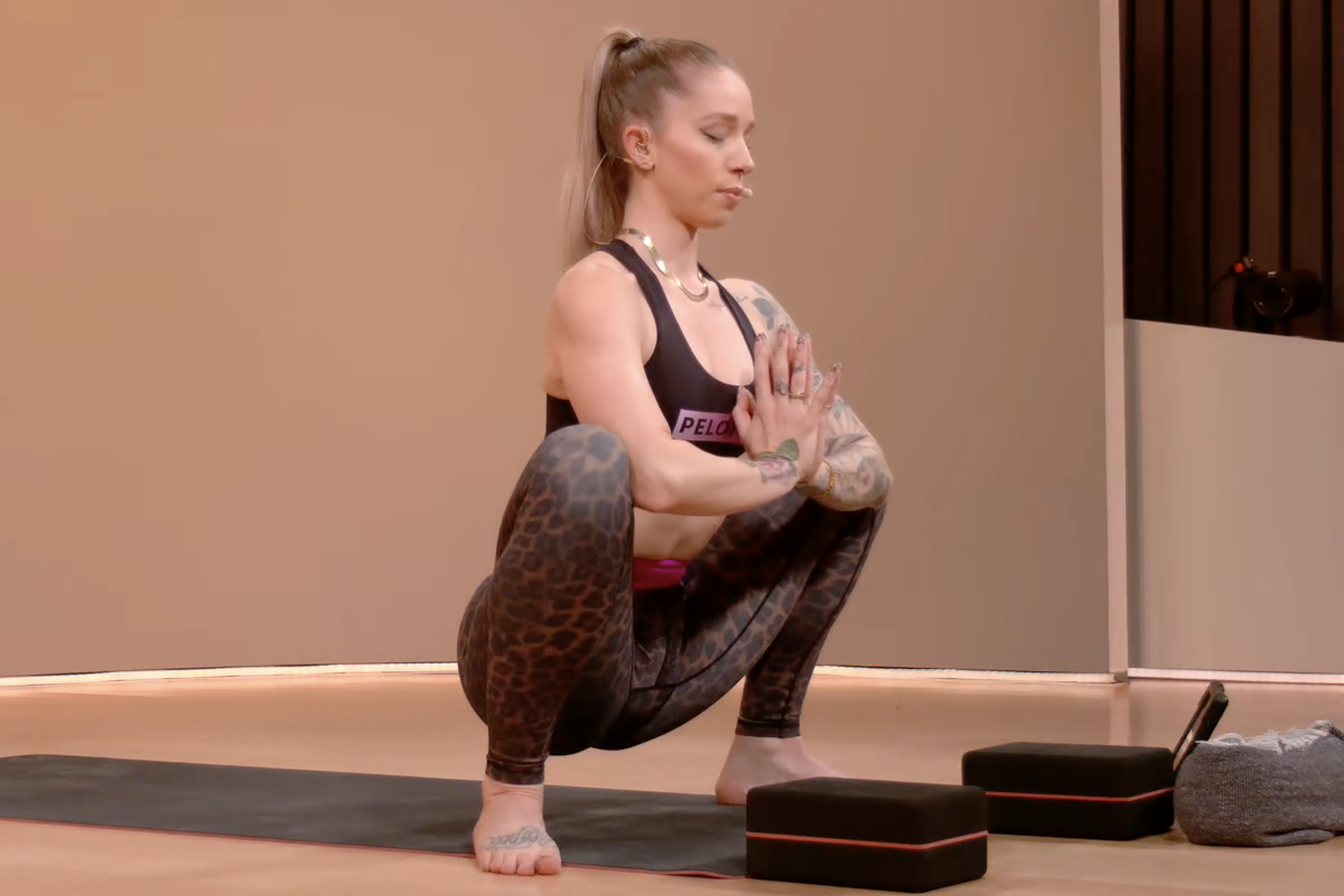
7. Garland Pose (Malasana)
Ideal for opening your hips and groin, Garland Pose can be modified for beginners.
Stand tall with your feet wider than your hips and your toes pointed outward.
Squat down, keeping your heels grounded if possible.
Press your elbows against your inner knees and place your hands in a prayer position.
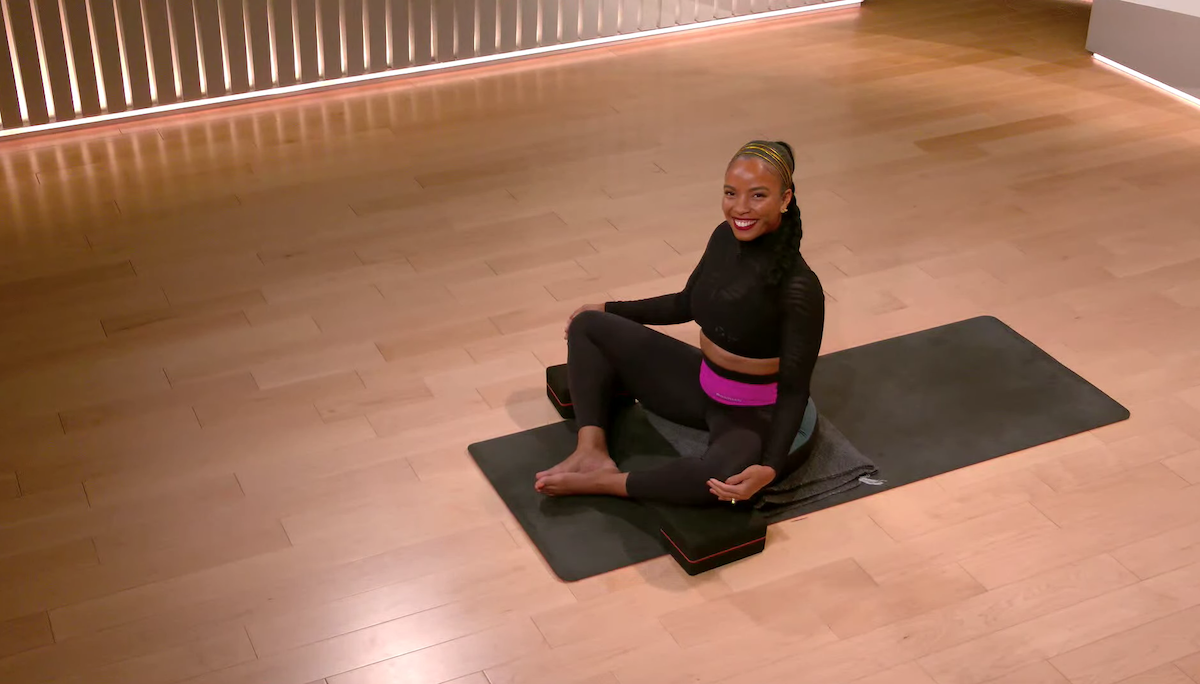
8. Butterfly Pose (Baddha Konasana)
Butterfly Pose is a gentle hip opener that’s perfect for relaxation.
Sit down with the soles of your feet together and your knees out.
If it's in your practice, you can maintain the leg position as you lean back to rest on the floor.
Relax your knees toward the ground, using pillows behind your head or under your knees for support if needed.

9. Triangle Pose (Trikonasana)
This pose targets your hips, hamstrings, and groin. You can use a block under your bottom hand if needed.
Stand facing the long side of your mat and step your feet three to four feet apart, with your right foot in front. Point your right toes to the front of the mat and turn your left foot to 45 degrees.
Extend your arms and reach your right hand down forward and down toward your right foot, keeping your left arm up. Keep your torso facing the long edge of the mat. Look toward your left hand if it feels OK for your neck.
Repeat on the other side.
How to Prevent Tight Hips
Preventing tight hips involves a multifaceted approach, one that extends beyond doing a one-off stretch every couple of weeks. Denis advises starting with hip-opening poses that feel comfortable and avoiding overstretching: "Start where you are and back off if you feel pain," he says. Activities like walking, stretching, yoga, and Pilates can also improve your hip health and flexibility. And even when you’re not stretching or exercising, you should pay attention to your posture, particularly if you have a desk job.
As always, your breath, a key indicator of your stretching threshold, is not to be overlooked. “Focus a little bit less on the physical stretch, and a little more on the depth of your breath. Because when you go just beyond your limits, the first thing to stop is your breath,” he explains. “If you stop breathing, it doesn't matter how mobile your hips are. Stay in a place where you can breathe deeply and use your breath as a guide to tell you when it's time to go deeper.”
If hip tightness persists, seek medical advice, as prolonged discomfort could signal a deeper issue. And always remember: Good hip health is about more than just touching your toes. It contributes to overall physical and mental well-being.

Peloton App
Access thousands of classes with no equipment needed.
How to Add Hip-Opening Stretches to Your Routine
Denis encourages you to practice hip-opening stretches every day if possible—how you do that is up to you. One option is to incorporate them into your existing workout or yoga routine, either as a warm-up or cooldown.
Eager as you may be to feel the benefits, start slow and pay attention to your body's signals to avoid overdoing it. When it comes to hip-opening stretches, consistency is more important than intensity. “There's no substitute for practice. Pushing yourself gently five times a week is a whole lot better than pushing yourself to exhaustion once a week," Denis says.
The Takeaway
It’s possible to have tight hips without even realizing it—and that holds true regardless of your activity level. With those stiff hips comes a litany of issues, from increased likelihood of injuries to compromised posture, so don’t brush them off. Use the simple hip-opening stretches we outlined above to avert these issues and don’t be shy about modifying them with props. Remember: These movements shouldn’t ever hurt, and if they do, pull back.
Read More

Stretching + Mobility
What's the Difference Between Static and Dynamic Stretching—And When Should You Do Each?

Stretching + Mobility
The 5 Best Quad Stretches for Runners and Cyclists

Stretching + Mobility
The 8 Best Stretches to Relieve a Tight Neck

Stretching + Mobility
Peloton’s Ultimate Guide to Mobility Training
This content is for informational and educational purposes only and does not constitute individualized advice. It is not intended to replace professional medical evaluation, diagnosis, or treatment. Seek the advice of your physician for questions you may have regarding your health or a medical condition. If you are having a medical emergency, call your physician or 911 immediately.
Want to strengthen your yoga practice?
We can help. Enter your email to get articles, instructor tips, and updates from Peloton sent to your inbox.
By providing your email address, you agree to receive marketing communications from Peloton.
For more about how we use your information, see our Privacy Policy.







